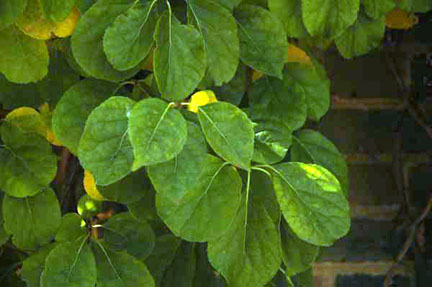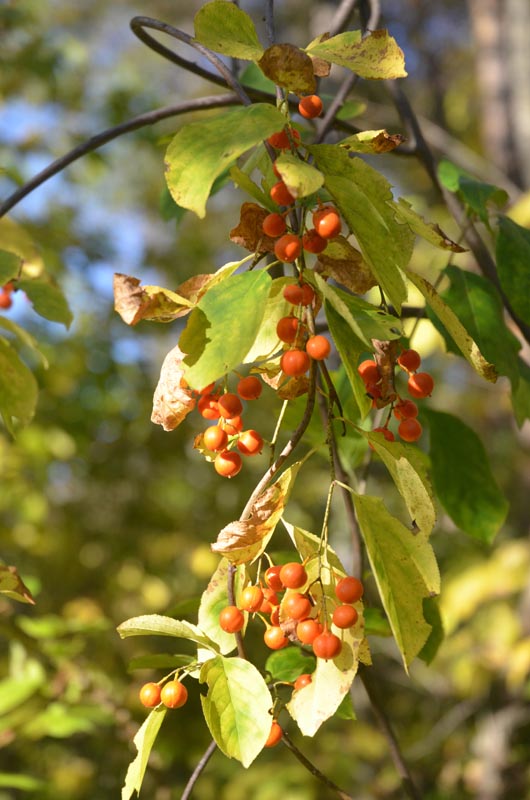
Woody > Celastrus > Celastrus scandens > Celastrus scandens
Celastrus scandens
American Bittersweet Vine
| Family |
| Celastraceae |
| Genus |
| Celastrus |
| Species |
| scandens |
| Category |
| Woody |
| Type |
| Vine |
| Pronunciation |
| USDA Hardiness Zone |
| 3-8 |
| Height |
| 6 m (vine) |
| Spread |
| 3 m (vine) |
Photographs
Description and Growing Information
Flowering Period
| General Description |
| A fast growing, 6 m, vigorous, deciduous twining vine which engulfs every fence in sight. |
| Landscape |
| May scramble over rock piles, fences and old trees. The fruit is often used in arrangements. |
| Shape |
| Climbing vine |
| Growth |
| Fast |
| ID Characteristic |
| A fast growing climbing vine with lustrous dark green leaves and yellow orange fruit that is often used for dried flower arrangements. |
| Pests |
| Diseases include; leaf spots, powdery mildews, crown gall, stem canker, Euonumus scale, aphids and two-marked treehopper. |
| Habitat |
| Canada to South Dakota and New Mexico. |
| Flower/Leaf Bud Description |
| Buds are brown, small, sessile, solitary, sub-globose and with about 6 hard mucronate scales. |
| Leaf Description |
| Leaves are lustrous dark green, glabrous, serrulate and have a broad cuneate at its base. Leaves are 4-8 cm in length. |
| Flower Description |
| Flowers are Polygamo-dioecious but primarily dioecious. They are a yellowish white colour and borne 4-8 cm long. |
| Fruit Description |
| Fruit is a three-lobed capsule with a yellow orange colour and crimson seeds on the inside. It is extensively collected and sold for dried flower arrangements. |
| Colour Description |
| Leaves are a deep glossy green in the summer and a greenish yellow in autumn. |
| Texture Description |
| Medium in leaf and medium coarse texture in the winter. |
| Notable Specimens |
| Joany’s Woods, West Williams, Middlesex County, Ontario, Canada. |
| Propagation |
| Seeds have a dormant embryo and require after-ripening for germination; there is some evidence that the seed coat may have an inhibiting effect upon germination. Seeds or dried fruits should be stratified in moist sand for 2-6 months at 5°C. Root cuttings collected in the autumn and cut into 50 mm lengths and insert vertically into pots or flats barley covering the top. Water and place in a cold frame until growth appears and then pot individually. |
 copy.jpg)


.jpg)